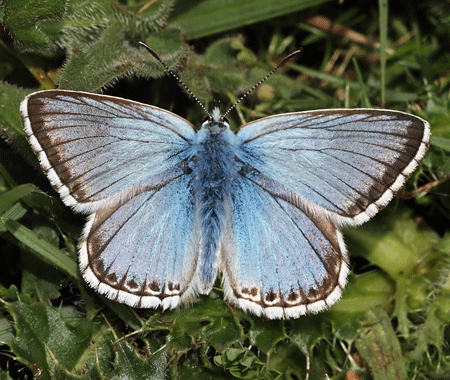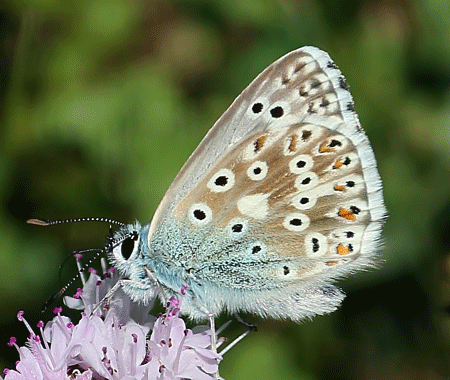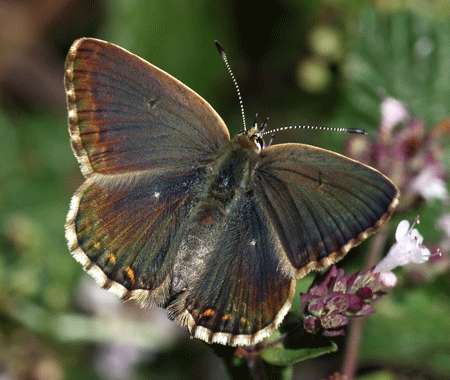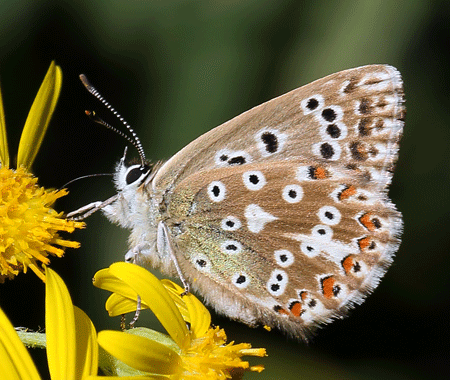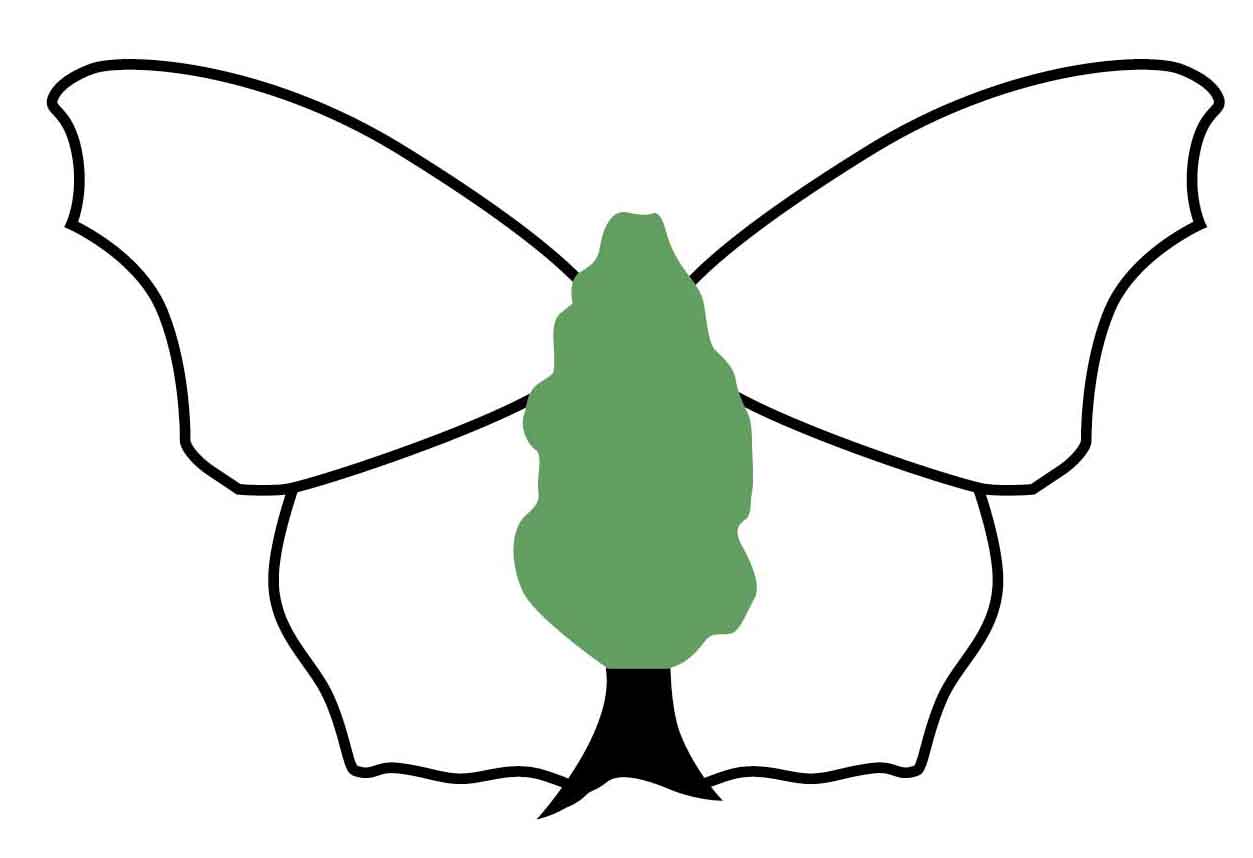 | Butterfly Conservation Saving butterflies, moths and our environment | Upper Thames Branch | 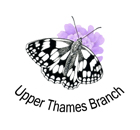 |
Chalk Hill Blue (Polyommatus coridon) | ||||||||||||||||||||||||
| Description | ||||||||||||||||||||||||
| Wing span: 33-40 mm. The Chalk Hill Blue exhibits strong sexual dimorphism, with the males being a pale sky blue, and the females a chocolate brown. The black markings on the male's wings are highly variable. The distribution of this species follows the distribution of Horseshoe Vetch which, in turn, follows the distribution of chalk and limestone grassland. This species is therefore restricted to England, south east of a line from the Wash to the Severn estuary. | ||||||||||||||||||||||||
| Images (click to enlarge) | ||||||||||||||||||||||||
| ||||||||||||||||||||||||
| Life Cycle | ||||||||||||||||||||||||
| There is one brood per year. Adults emerge in the first half of July in typical years, with a peak being reached at the end of July and early August. The ovum is the over-wintering stage. | ||||||||||||||||||||||||
| Larval Foodplants | ||||||||||||||||||||||||
| The sole larval food plant is Horseshoe Vetch (Hippocrepis comosa). | ||||||||||||||||||||||||
| Nectar Sources | ||||||||||||||||||||||||
| Adults feed primarily on Bird's-foot Trefoil, Field Scabious, Selfheal, Thistles and Thyme. | ||||||||||||||||||||||||
| UK Conservation Status | ||||||||||||||||||||||||
| Vulnerable | ||||||||||||||||||||||||
| Earliest UTB first sighting (since 2004) : 24th June | ||||||||||||||||||||||||
| Mean UTB first sighting (since 2004) : 5th July | ||||||||||||||||||||||||
| Species Champion | ||||||||||||||||||||||||
| Nick Bowles Email: chalk-hill-blue@upperthames-butterflies.upperthames-butterflies.org.uk | ||||||||||||||||||||||||
| Reports | ||||||||||||||||||||||||
| Distribution and Sites | ||||||||||||||||||||||||
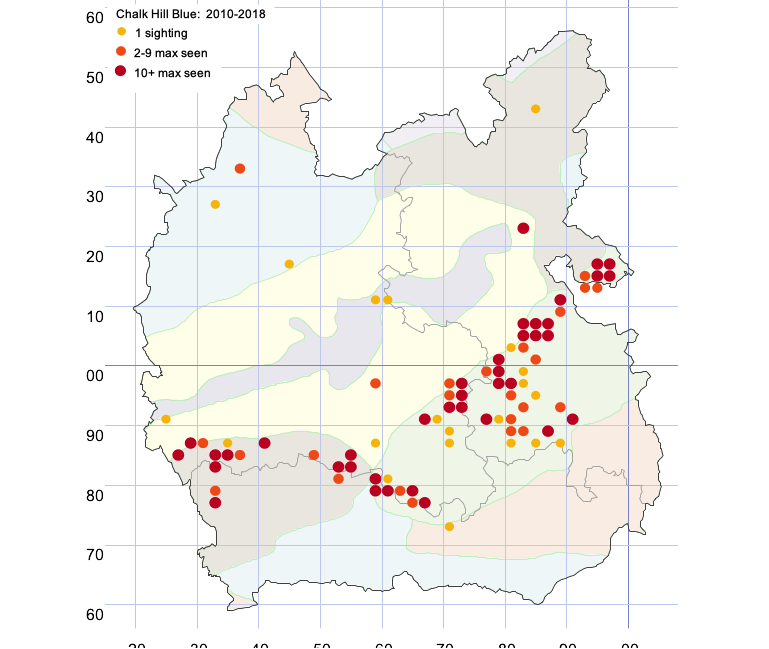 Key |
| |||||||||||||||||||||||
| Related Species | ||||||||||||||||||||||||
| ||||||||||||||||||||||||
Copyright © Butterfly Conservation Upper Thames Branch 2025
Privacy and Copyright Statement
Butterfly Conservation : Company limited by guarantee, registered in England (2206468)
Registered Office: Manor Yard, East Lulworth, Wareham, Dorset, BH20 5QP, Tel: 01929 400 209
Charity registered in England & Wales (254937) and in Scotland (SCO39268)
Privacy and Copyright Statement
Butterfly Conservation : Company limited by guarantee, registered in England (2206468)
Registered Office: Manor Yard, East Lulworth, Wareham, Dorset, BH20 5QP, Tel: 01929 400 209
Charity registered in England & Wales (254937) and in Scotland (SCO39268)

